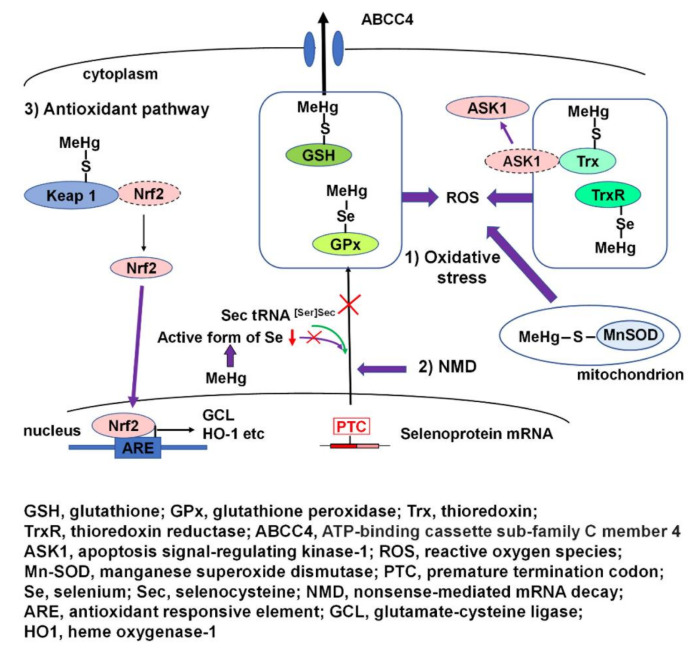Figure 2.
Schematic overview of MeHg-mediated oxidative stress and activation of the antioxidant Nrf2 pathway. (1) Thiols and selenols of many antioxidant proteins and enzymes of glutathione (GSH) and thioredoxin (Trx) cellular redox systems, such as GSH, GPx1, and TrxR, interact with MeHg, resulting in the disruption of the cellular redox system and the incidence of oxidative stress. The interaction of MeHg and Trx results in release and activation of apoptosis signal-regulating kinase-1 (ASK1) followed by ASK1-dependent apoptosis. In addition, interaction of mitochondrial Mn-SOD with MeHg may contribute to an increase in reactive oxygen species (ROS). (2) MeHg-induced relative intracellular Se deficiency causes failure in the recoding of a UGA codon for Sec because of active Se deficiency and results in the degradation of antioxidant selenoenzyme mRNA by nonsense-mediated mRNA decay (NMD). (3) The interaction of MeHg and Nrf2 regulator Keap1 leads to the activation of antioxidant transcription factor Nrf2, resulting in the antioxidant responsive element-mediated induction of oxidative stress enzyme genes, such as glutamate-cysteine ligase (GCL) and heme oxygenase-1 (HO-1).

